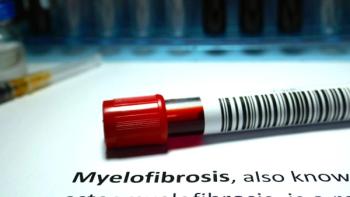
- Hematology Special Issue (2)
- Volume 1
- Issue 2
Through Thick and Thin: Monitoring Blood Clots With ET
Patients with essential thrombocythemia should know the signs and symptoms of blood clots.
ESSENTIAL THROMBOCYTHEMIA (ET) is one of the classical myeloproliferative neoplasms (MPNs), along with polycythemia vera and primary myelofibrosis (MF). Together, the blood cancers share characteristics such as an overproduction of blood cells; tendencies toward coagulation disorders that, paradoxically, include both blood clotting or bleeding; and a potential for disease progression, rarely including transformation to acute forms of leukemia (less than 10 percent).
An estimated 135,000 individuals in the United States are living with ET. The disease is more common in women than men (60 percent versus 40 percent) and most often diagnosed in older people. However, 20 percent of people who receive a diagnosis are under age 40. An official diagnosis, according to the World Health Organization, includes a sustained increase in platelets; a characteristic mutation seen in affected cells, such as JAK2 V617F, CALR or MPL; exclusion of other mimicking diseases, including early or prefibrotic MF; and characteristic features on a bone marrow test.
In some cases, patients with ET are asymptomatic (show no symptoms) at diagnosis and are recognized only after a high platelet count is noted on an annual physical. In other cases, patients present with fatigue, headaches, visual change, numbness, itching and/or color changes in their extremities. Blood clotting, another symptom that can lead to the diagnosis, has a major impact on prognosis and treatment. Therefore, it is important to understand symptoms, risk factors and treatment of ET-associated blood clotting, which can affect arteries and veins, as well as small and large blood vessels.
Counseling patients about the signs and symptoms of blood clotting can make them aware of the health risks associated with ET. For instance, small vessel disturbances may affect quality of life by leading to headaches; transient visual loss; or numbness, tingling, burning or discoloration of the extremities, (which may appear red blue or purple). Small vessel disturbances usually do not influence prognosis.
On a more serious scale, occlusion (blockage or closing) of a large vessel can affect arteries or veins. Arterial blood clotting can lead to stroke, ministroke and/or heart attacks. Signs of arterial blood clotting include facial droop, difficulties with speech, weakness on one side of the body, chest pressure and shortness of breath.
Venous blood clotting, more commonly known as deep vein thrombosis (DVT), can affect the legs, resulting in tightness, strain, redness and/or swelling. A DVT can break off and travel to the lungs, potentially leading to a pulmonary embolism, which can be very serious. A blood clot in the lungs may cause chest pain, difficulty breathing, fast heartbeat and, sometimes, a bloody cough. Venous clotting can also affect veins that drain the liver, intestines and spleen (abdominal venous thrombosis). These tend to be more common in women than men and can present with abdominal pain, bloating and fluid retention.
After learning the signs and symptoms, patients are assigned a blood clotting risk category — very low, low, intermediate or high — based on age over 60 years, blood clotting history and presence of the JAK2 V617F mutation. For example, high-risk patients are older than 60 and have a JAK2 mutation or a prior history of blood clotting.
Risk classification has a strong impact on treatment decisions. For those with high-risk disease, hematologists recommend medications such as Hydrea (hydroxyurea), a type of chemotherapy; Pegasys (pegylated interferon); or Agrylin (anagrelide), a platelet-lowering agent. For patients with disease that’s less than high risk, either observation alone (for very low-risk patients) or aspirin may be sufficient, particularly for those with small-vessel disturbances, JAK2 mutations or cardiovascular risk factors.
Prescribing aspirin should be selective rather than universal. In some patients, aspirin may bring more risk, such as bleeding, than benefit, especially for those with CALR mutations and extremely high platelet counts. It is important to note that the platelet count itself does not enter into the risk grouping; higher counts can associate with bleeding; and in asymptomatic, lower-risk patients, drugs to lower platelet count are not given without reason. Blood thinners are often prescribed for patients who develop deep vein thrombosis and/or pulmonary embolism.
Coumadin (warfarin) has been the standard, but newer agents are increasingly used, including direct oral anticoagulants. The hematologist will decide on the type of anticoagulant and duration of therapy. Arterial blood clotting events are co-managed with cardiologists and neurologists; if not already used, anti-platelet therapies also play an important role.
Although medications can help treat blood clotting, patients can lower their risk by maintaining a healthy lifestyle. Because ET is a vascular disease, it is important to maintain excellent vascular health. Such a strategy involves smoking cessation, maintaining a healthy weight, following a moderate diet, exercising and monitoring levels of blood pressure, glucose and cholesterol.
It is crucial that patients be proactive and educate themselves about ET. They must be their own best advocate and remain optimistic, because the pace and progress of ET/ MPN research are unprecedented.
BRADY L STEIN, M.D., M.H.S., is an associate professor of medicine in the division of hematology and oncology at Northwestern University Feinberg School of Medicine in Chicago. He received his medical degree from Emory University in Atlanta and completed his residency and fellowship at the Johns Hopkins Hospital in Baltimore.
Articles in this issue
over 7 years ago
Striking a Match for Stem Cell Transplantsover 7 years ago
Taking a Shot to Treat Blood Cancers




